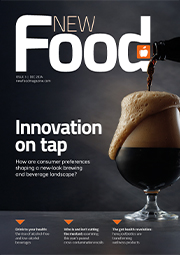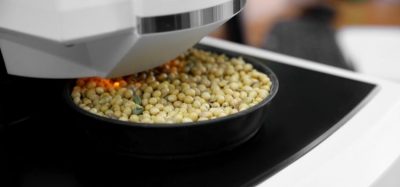Simultaneous screening of over 100 compounds from a single milk sample through the use of InfiniPlex for Milk Array
- Like
- Digg
- Del
- Tumblr
- VKontakte
- Buffer
- Love This
- Odnoklassniki
- Meneame
- Blogger
- Amazon
- Yahoo Mail
- Gmail
- AOL
- Newsvine
- HackerNews
- Evernote
- MySpace
- Mail.ru
- Viadeo
- Line
- Comments
- Yummly
- SMS
- Viber
- Telegram
- Subscribe
- Skype
- Facebook Messenger
- Kakao
- LiveJournal
- Yammer
- Edgar
- Fintel
- Mix
- Instapaper
- Copy Link
Posted: 1 April 2017 | Randox Food Diagnostics | No comments yet
Drug residues in milk present major concern due to the potential public health and industrial implications. Fast, accurate and reliable screening solutions are needed…
Aim
Multiplex screening of over 100 compounds from a single milk sample without sample preparation through the use of the InfiniPlex for Milk Array.
Background
Drug residues in milk present major concern for farmers, dairy processors, cheese manufacturers, authorities and consumers due to the potential public health and industrial implications. Through inappropriate antimicrobial use in animals raised for human consumption, antibiotic-resistant organisms can enter the food supply or can spread to various components of the ecosystem. For consumer protection, regulatory limits have been set for the majority of compounds.
To monitor the presence of drug residues in a large number of milk samples, fast, accurate and reliable screening solutions are needed. Biochip Array Technology (BAT) enables simultaneous determination of multiple analytes from a single sample as multiple immunoassays take place at the same time in discrete test sites on the biochip surface. This significantly increases the output of test results. The biochip array reported here enables the simultaneous detection of over 100 compounds in cow milk and offers the most comprehensive, highly sensitive multi-analytical screening tool as up to date commercial milk screening tests only detect a limited scope of the compounds required under current legislation. In addition, because the InfiniPlex for Milk Array contains 43 individual tests on each biochip and each test detects different compounds, the array has the ability to identify exact veterinary drug formulations, as many of these formulations contain a combination of different compounds making the InfiniPlex for Milk Array an excellent surveillance tool for safeguarding milk quality. The unique level of discrimination between compounds greatly reduces the extent of confirmatory analysis required, saving on cost and time.
The rest of this whitepaper is restricted - login or subscribe free to access


Why subscribe? Join our growing community of thousands of industry professionals and gain access to:
- bi-monthly issues in print and/or digital format
- case studies, whitepapers, webinars and industry-leading content
- breaking news and features
- our extensive online archive of thousands of articles and years of past issues
- ...And it's all free!
Click here to Subscribe today Login here
Related content from this organisation
- Comprehensive Multi-Analytical Screening of Contaminants in Raw Cow Milk using the InfiniPlex for Milk Array
- India-based firm takes honey testing on the road
- New test gets South American honey producers buzzing
- Randox Food Diagnostics
- Simultaneous screening of over 100 compounds from a single milk sample through the use of InfiniPlex for Milk Array










